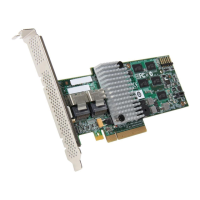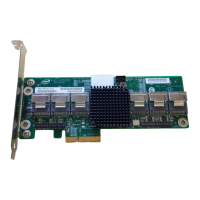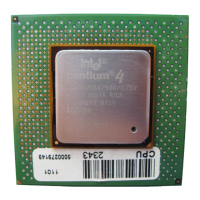4 Intel® RAID Controller RS2WG160 Hardware User’s Guide
— No reboot necessary after expansion
• Upgradeable Flash ROM interface.
• Allows for staggered spin-up, hot-plug, and lower power consumption.
• User specified rebuild rate (percent of system resources to use from 0-100%).
Caution: Exceeding 50%
rate may cause operating system errors due to waiting for
controller access.
• Background operating mode can be set for Rebuilds, Consistency Checks,
Initialization (auto restarting Consistency Check on redundant volumes), Migration,
OCE, and Patrol Read.
Redundancy and Error Handling
• SES2 enclosure management support
• SGPIO enclosure management support
• Fault indicators per drive.
• Drive coercion (auto-resizing to match existing disks).
• Auto-detection of failed drives with transparent rebuild. There must be disk activity
(I/O to the drive) for a missing drive to be marked as failed.
• Auto-resume of initialization or rebuild on reboot (the Auto Rebuild feature must be
enabled before virtual disk creation).
• Smart initialization automatically checks consistency of virtual disks if there are five
or more disks in a RAID 5 array, which optimizes performance by enabling read-
modify-write mode. RAID 5 arrays of only three or four drives use Peer Read mode.
• Smart Technology predicts failures of drives and electronic components.
• Patrol Read checks drives and maps bad sectors.
• Commands are retried at least four times.
• Firmware provides best effort to recognize an error and recover if possible.
• Failures are logged from controller and drive firmware, and SMART monitor.
• Failures are logged in NVRAM, viewable from OS Event Log, Intel
®
RAID Web
Console 2, CIM, and LEDs.
• Multiple cache options allow configuration-specific performance optimization:
— Write-back: Faster because it does not wait for the disk but
data will be lost if
power is lost.
— Write-through: Usually slower but
ensures data is on the disk.
— Read Ahead: Predicts next read will be sequent
ial and buffers this data into the
cache.
— Non Read Ahead: Always reads from the drive after determining
exact location
of each read.

